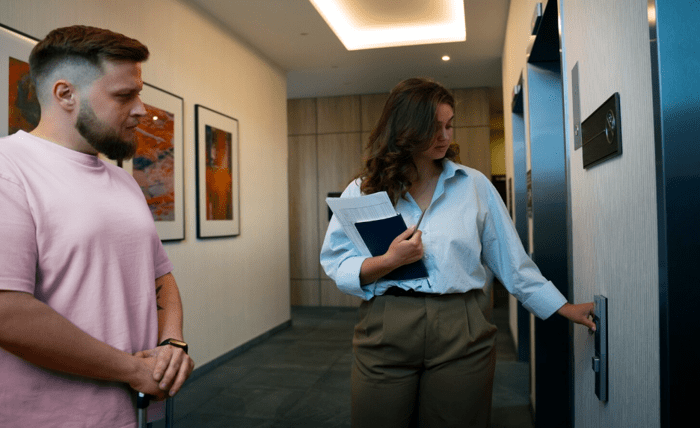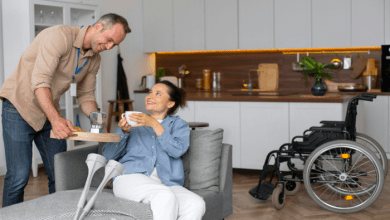
The idea of adding a home elevator once felt like the peak of luxury, something reserved for sprawling mansions. Today, however, that perception has shifted dramatically. As more homeowners embrace the “aging in place” concept and seek long-term accessibility solutions, the residential elevator has become a practical and increasingly common addition to modern homes. But with this convenience comes a critical question, especially when family members are involved: “Is it truly safe?”
The simple answer is a resounding yes. Modern residential elevators are engineered with multiple, overlapping layers of safety, governed by stringent industry standards (like the ASME A17.1 Safety Code). They are far from the rickety contraptions you might see in old movies. Their design philosophy is built on redundancy, if one system fails, another is there to back it up.
If you’re considering an elevator for your home, or already have one, understanding these key safety features can provide invaluable peace of mind. Let’s pull back the curtain on the technology that keeps you and your loved ones secure.
1. Emergency Battery Backup and Lowering
This is perhaps the most common concern: What happens if the power goes out while I’m inside? Every modern residential elevator is equipped with a battery backup system (UPS – Uninterruptible Power Supply). This system doesn’t just keep the lights on in the cab; it provides enough power for the elevator to safely descend to the lowest level and unlock the door, allowing you to exit. You are never left “hanging” between floors.
2. Door and Gate Interlocks
This is one of the most critical and active safety systems. An elevator door interlock is an electromechanical safety lock. In simple terms, it enforces two non-negotiable rules:
- The elevator will not move if any door in the house (the “hoistway” door) is open.
- The hoistway door on any floor cannot be opened unless the elevator cab is present at that specific landing.
This system prevents the two most obvious dangers: the elevator moving with an open door and someone accidentally stepping into an empty shaft.
3. Light Curtains and Safety Edges
Working in tandem with the interlocks are sophisticated door sensors. Instead of just a single beam of light like your garage door, many home elevators use a “light curtain.” This is a dense grid of infrared beams that covers the entire opening. If any object, a person, a pet, a grocery bag, breaks any of these beams while the door is closing, the door will immediately and automatically retract. This makes it virtually impossible for the door to close on someone.
4. Emergency Communication System
Getting trapped is a scary thought, but being trapped and unable to call for help is even worse. Every elevator cab is required to have a reliable, built-in, two-way communication system. This is typically a hands-free phone that automatically dials a pre-programmed number (like a monitoring service, your cell phone, or a relative) when the emergency button is pressed. An audible alarm bell is also included to alert others in the home.
5. Overspeed Governors and Safety Brakes
This feature addresses the most dramatic “Hollywood” fear: a free-falling cab. All residential elevators, regardless of their drive system (hydraulic, traction, etc.), are equipped with safety brakes. On traction (cable-driven) models, this is often an “overspeed governor.” This device monitors the elevator’s speed. If the cab begins to descend too quickly (exceeding its rated speed), the governor engages a set of powerful, automatic brakes that clamp onto the guide rails, bringing the cab to a safe and secure stop.
6. Under-Cab Safety Sensors
What if a pet, a child, or a dropped object is in the “pit” area beneath the elevator? Modern elevators feature a large sensor panel on the underside of the cab. If this panel encounters any obstruction as it descends, the elevator will immediately stop, preventing a crushing or shearing injury.
7. Keyed Access and Control
To prevent unauthorized use, especially by young children, most home elevators come with a keyed operation system. The elevator cannot be called or operated without the key, giving you complete control over who uses it and when. Inside the cab, you will always find an “Emergency Stop” button, which will halt the elevator’s movement instantly when pressed.
The Most Important Feature: Professional Installation and Maintenance
A final, crucial component of safety isn’t a part, but a practice. A residential elevator is a complex piece of machinery. Its safety is only as good as its installation. Always use a certified, licensed, and reputable elevator contractor.
Furthermore, these safety systems need to be tested and maintained. Just like your car needs an oil change, your elevator needs regular (typically annual) professional servicing. A technician will test the battery backup, check the interlocks, inspect the brakes, and ensures every single safety feature is functioning exactly as it was designed.
A residential elevator is a life-changing investment, offering freedom and accessibility. By understanding the robust, redundant safety systems built into every modern unit, you can be confident that it’s not just a convenient addition, but a truly safe and reliable part of your home for years to come.




